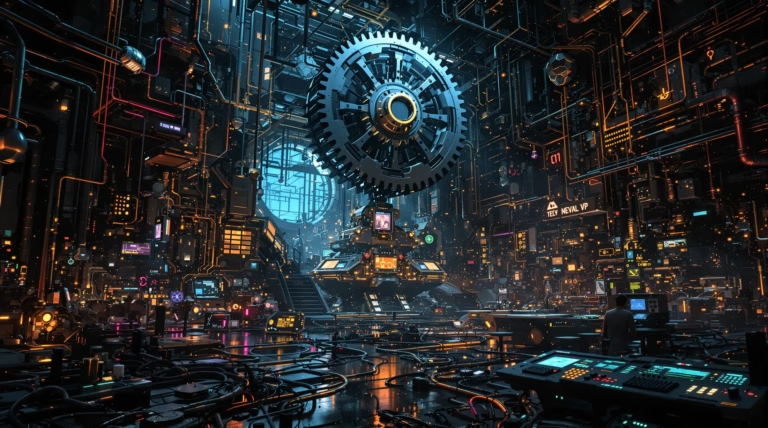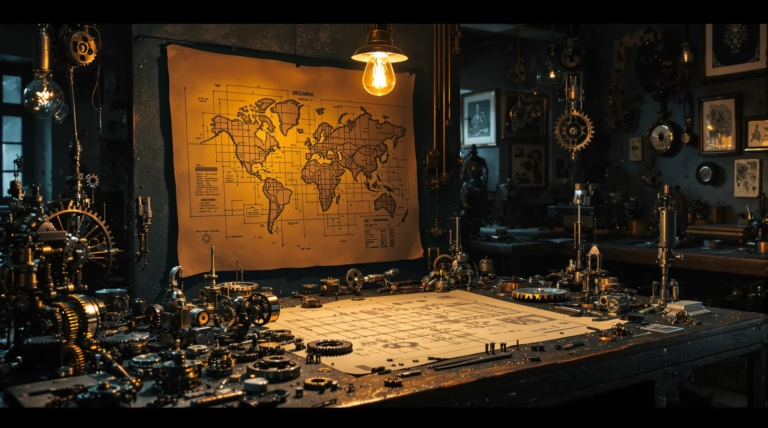Design Engineer: Roles, Skills, and Career Opportunities
Looking to understand the crucial role of design engineers in modern product development? Discover how these professionals blend technical expertise with creative problem-solving to shape the future of innovation across multiple industries.
What is a Design Engineer?
A design engineer is a professional who creates and develops designs for products, systems, or structures using both technical expertise and creative problem-solving skills. Operating at the intersection of design and engineering disciplines, these specialists bridge the gap between conceptual ideas and practical implementation. They work across multiple fields including mechanical, electrical, civil, aerospace, and software engineering to transform abstract concepts into tangible solutions.
Design engineers utilize computer-aided design (CAD) software and other advanced tools to develop detailed specifications, create models and prototypes, and conduct thorough testing of product designs. Their primary goal is to enhance company productivity and profitability by developing innovative products that meet market demands and comply with industry standards.
Role and Responsibilities of a Design Engineer
- Analyzing project requirements and translating them into viable design solutions
- Creating detailed specifications and technical drawings using CAD software
- Developing and testing prototypes
- Ensuring products meet performance requirements and quality standards
- Collaborating with cross-functional teams
- Conducting feasibility studies and risk assessments
- Troubleshooting design issues during development
Importance in Product Development
Design engineers serve as the backbone of the product development process, transforming initial concepts into market-ready solutions. Their expertise directly impacts a product’s functionality, durability, manufacturability, and user experience. By applying scientific principles and mathematical techniques to solve complex problems, they ensure that products not only work effectively but also satisfy user needs and business objectives.
The strategic value of design engineers lies in their ability to balance innovation with practicality. They identify potential manufacturing challenges early in the development cycle, helping companies avoid costly redesigns later. Through iterative design approaches, they continuously refine products based on testing feedback and emerging market trends.
Essential Skills for a Design Engineer
Design engineers require a diverse skill set that combines technical expertise with creative problem-solving abilities. At the foundation of this profession lies strong mathematical proficiency and analytical thinking, which enable engineers to develop effective designs that meet both functional requirements and market demands.
Technical and Analytical Skills
- Proficiency in CAD software and design tools
- Strong analytical and mathematical abilities
- Knowledge of engineering principles and industry standards
- Technical writing and documentation skills
- Problem-solving and troubleshooting capabilities
- Understanding of regulatory compliance requirements
- Adaptability to new technologies and methodologies
Collaboration and Communication Skills
| Skill Type | Description |
|---|---|
| Verbal Communication | Ability to explain complex technical concepts to diverse audiences |
| Written Communication | Creating clear reports, specifications, and documentation |
| Active Listening | Understanding client needs and incorporating stakeholder feedback |
| Negotiation | Balancing competing priorities and resolving conflicts |
| Team Collaboration | Working effectively with cross-functional teams |
Tools and Technologies Used by Design Engineers
Design engineers rely on a sophisticated array of digital and physical tools to bring concepts to life. At the core of their technical arsenal is computer-aided design (CAD) software, enabling the transformation of abstract ideas into detailed digital models with precise specifications. These powerful platforms serve as the foundation for product development, allowing engineers to visualize, test, and refine designs before physical manufacturing begins.
Beyond software solutions, design engineers employ various prototyping technologies to create tangible representations of their digital designs. From rapid prototyping methods like 3D printing to traditional manufacturing techniques, these tools help validate design concepts and identify potential issues early in the development process. As technology evolves, design engineers must continuously update their technical knowledge to enhance efficiency, accuracy, and innovation in their work.
CAD Software and Prototyping Tools
- Primary CAD Software:
- AUTOCAD – for 2D and 3D modeling
- SolidWorks – comprehensive 3D design solution
- PTC Creo – advanced parametric modeling
- Prototyping Technologies:
- 3D printing for rapid prototyping
- CNC machining for precision components
- Laser cutting for detailed parts
- Various molding techniques for production-ready prototypes
Emerging Technologies in Design Engineering
| Technology | Application |
|---|---|
| Augmented Reality (AR) | Virtual prototype visualization and interactive design reviews |
| Virtual Reality (VR) | Immersive design testing and spatial understanding |
| Artificial Intelligence | Design optimization and automation of routine tasks |
| Cloud Collaboration | Real-time remote team cooperation and design sharing |
| Generative Design | Algorithm-driven design exploration and optimization |
Career Opportunities and Growth for Design Engineers
Design engineers enjoy diverse career opportunities across multiple industries, with roles spanning from product design to system engineering and project management. The versatility of this profession allows practitioners to find positions in manufacturing, automotive, aerospace, electronics, construction, technology, and consumer goods sectors.
Salary Expectations and Job Outlook
| Career Level | Annual Salary Range |
|---|---|
| Entry Level | $60,000 – $75,000 |
| Mid-Career (5-10 years) | $80,000 – $110,000 |
| Senior Level | $120,000+ |
The job outlook remains strong, with steady growth projected through 2030. This positive trajectory is driven by continued innovation requirements, growing product complexity, and increased focus on sustainability. Design engineers who maintain expertise in emerging technologies like AI-assisted design, advanced simulation, and sustainable engineering will likely experience the most favorable job prospects and salary growth.
Pathways to Becoming a Design Engineer
The traditional pathway to becoming a design engineer starts with formal education, typically a bachelor’s degree in engineering disciplines such as mechanical, electrical, civil, or product design engineering. Universities offer specialized programs combining technical engineering foundations with design-focused coursework. During studies, aspiring design engineers gain practical experience through internships, co-op experiences, and design competitions that build industry connections. Advanced positions or academic roles often require master’s degrees for specialized expertise.
- Traditional Educational Path:
- Bachelor’s degree in engineering (mechanical, electrical, civil, product design)
- Specialized university programs combining technical and design elements
- Internships and co-op experiences
- Design competition participation
- Optional master’s degree for specialization
- Alternative Pathways:
- Technical college programs
- Professional certifications in design software
- Industry-specific methodology training
- Entry-level assistant or junior design positions
- Continuous professional development
Professional development continues throughout a design engineer’s career through membership in organizations like the American Society of Mechanical Engineers (ASME) or the Industrial Designers Society of America (IDSA). These associations provide valuable resources, networking opportunities, and continuing education programs essential for career advancement and staying current with evolving technologies, materials, and design approaches.







